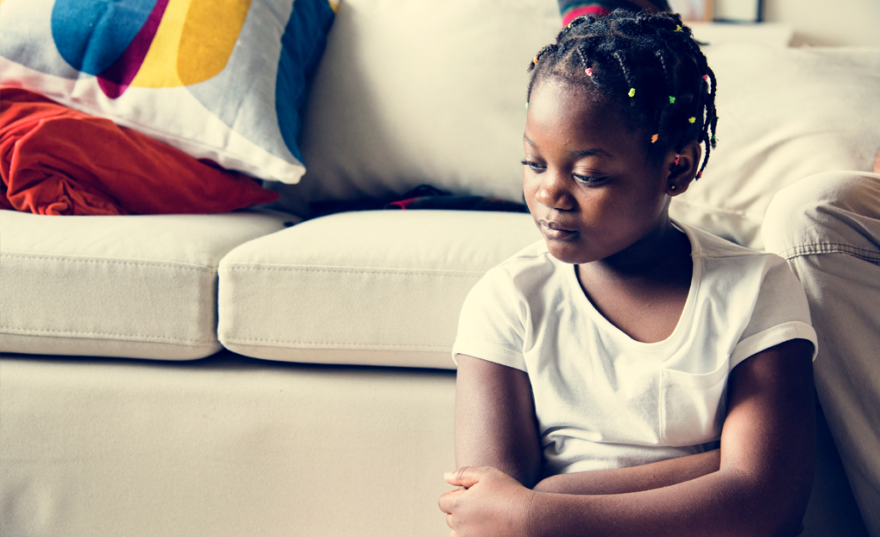Peer victimization increases the risk of developing long-lasting mental health problems,1 but the underlying mechanisms are unclear. Some have proposed that stress systems involving the hypothalamic-pituitary-adrenal (HPA) axis and cortisol production might be involved,2 but the data are inconsistent. One reason for these discrepant findings might be because cortisol levels measured in saliva do not capture chronic changes in cortisol. To overcome this issue, Isabelle Ouellet-Morin and colleagues tested whether peer victimization is associated with cortisol concentrations by measuring this stress hormone in hair.
The researchers obtained hair samples from 556 boys and girls aged 17 years old, who had reported seven occurrences of peer victimization since 6 years-of-age. They found that boys exposed to moderate levels of peer victimization had lower hair cortisol concentrations (HCC) than boys who experienced low levels of peer victimization. Intriguingly, the association was not linear, as high levels of victimization were associated with higher HCC. In addition, this relationship was not identified in girls. However, changes in peer victimization were related to HCC for both boys and girls.
Ouellet-Morin et al. then went on to study whether peer victimization was also associated with depressive symptoms based on HCC. Here, only youth who had low HCC reported higher levels of depression, and this was in the absence of peer victimization.
Overall, it seems that the HPA axis can be dysregulated following peer victimization, but the nature of this dysregulation differs depending on sex and the severity of the adverse event. “The stress systems are triggered by novelty, unpredictability, uncontrollability and a sense of threat to the social ego and physical safety”, explains Ouellet-Morin. “New tools, such as mobile applications, might help victims to learn and experiment with new strategies to regain a sense of control, reappraise their experiences and reach out for help”. In-fact, the researchers have recently published an app named +Fort: Stronger than Bullying for Canadian youth.3 “Youth thrive for independence and are sensitive to how people perceive them”, says Ouellet-Morin. “This app might help them regain confidence in their own abilities to reduce victimization and reach out to someone for help”.
Going forward, the researchers urge that, in addition to community-based and school-based interventions, we persevere in trying to identify the mechanisms underlying vulnerability to mental health problems and understand why some youth are at greater risk than others when victimized.
Referring to
Ouellet-Morin, I., Cantave, C., Paquin, S., Geoffroy, M-C., Brendgen, M., Vitaro, F., Tremblay, R., Boivin, M., Lupien, S. & Côté, S. (2020), Associations between developmental trajectories of peer victimization, hair cortisol, and depressive symptoms: a longitudinal study. J. Child Psychol. Psychiatr. doi: 10.111/jcpp.13228.
References
1Arsenault, L. (2018), Annual Research Review: The persistent and pervasive impact of being bullied in childhood and adolescence: implications for policy and practice. J. Child Psychol. Psychiatr. 59: 405–421. doi: 10.1111/jcpp.12841.
2Koss, K.J. et al. (2018), Annual Research Review: Early adversity, the hypothalamic‐pituitary‐adrenocortical axis, and child psychopathology. J. Child Psychol. Psychiatr. 59: 327–346. doi: 10.1111/jcpp.12784.
3Ouellet-Morin, I. & Robitaille, M-P. +Fort, a mobile application for victims of bullying: development and initial steps toward validation. In: Campbell M & Bauman S, eds. Reducing Cyberbullying in Schools. USA: Elsevier; 2017:159-174.
See also
Study note: The researchers explain that their findings — namely the U-shaped curve to explain the association between peer victimization and hair cortisol concentrations according to sex — are consistent with the stress inoculation model described by Parker, K. et al. in 2004. (doi: 10.1001/archpsyc.61.9.933). By this model, just as a vaccine primes the immune system, exposing a child to moderately stressful events can promote stress resistance later in life.

